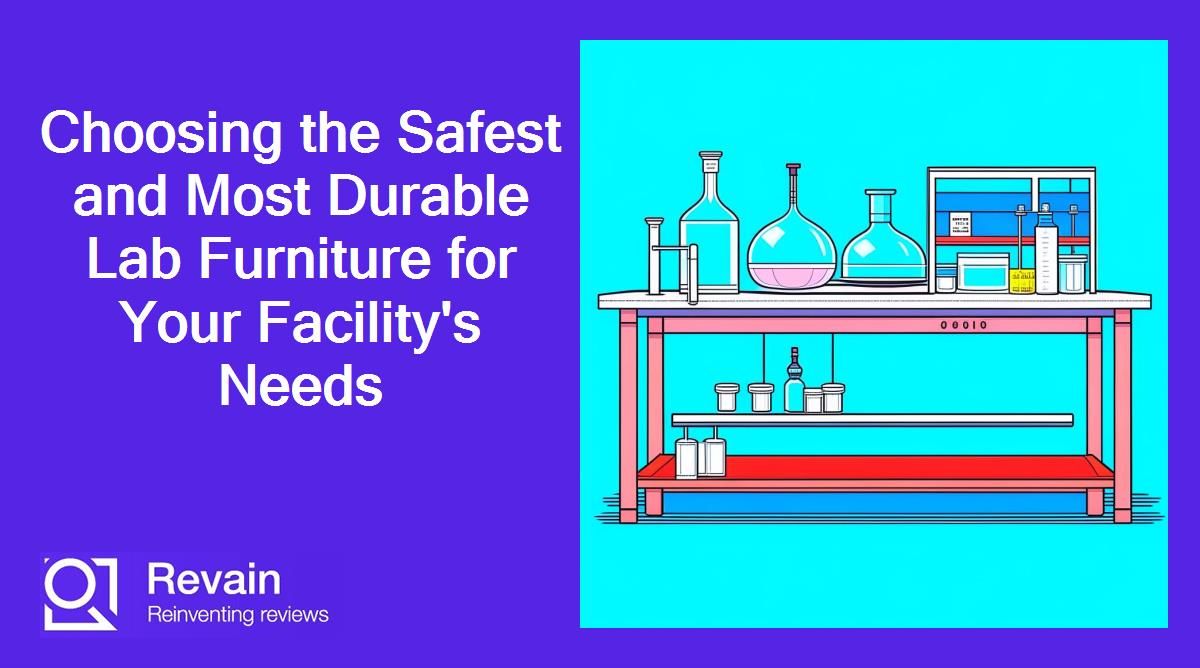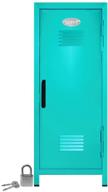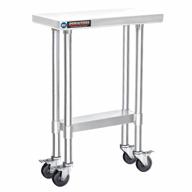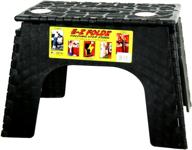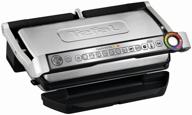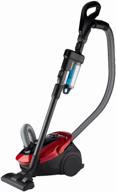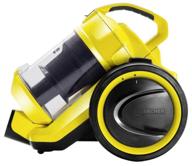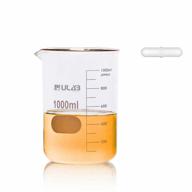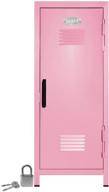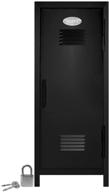Top products in 🔬 Lab Furniture
Different Types of Lab Furniture
Laboratories require specialized furniture and equipment to support research, testing, and other scientific work. There are several different types of lab furniture designed for specific functions.
Workbenches
Workbenches are essential in most labs, providing stable, flat surfaces for conducting experiments, making observations, and operating laboratory equipment. Common workbench types include:
- Standard lab benches - all-purpose tables with chemical-resistant tops
- Island benches - freestanding workstations with access from all sides
- Mobile workbenches - height-adjustable tables on lockable casters
Fume Hoods
Fume hoods are enclosed ventilation devices that protect users from hazardous fumes. They have adjustable sashes and built-in air ducts to control airflow and fume expulsion.
Storage Cabinets
Laboratories require extensive storage space for chemicals, samples, equipment, and more. Common options include:
- Flammable storage cabinets - protect volatile substances
- Corrosive storage cabinets - resist damage from acids/bases
- Laboratory cabinets/drawers - for general supply storage
Lab Sinks
Lab sinks allow for washing, waste disposal, and chemical dilution tasks. They are made of materials like epoxy resin or porcelain that resist damage from chemicals.
Lab Carts
Carts with wheels provide movable storage and transport of lab equipment and supplies around the facility.
Similar products
Shelving
Wall-mounted and freestanding shelving units allow efficient use of vertical storage space. Industrial-grade metal shelving is best suited for the lab environment.
Choosing lab furniture suited to the specific needs of the lab is key for optimized workflow and safety. Proper installation, use and maintenance are also essential for maximum utility and longevity.
Storage Cabinets for Laboratories
Proper storage is critical in the laboratory environment. Hazardous chemicals, sensitive samples, and fragile equipment must be securely contained. Storage cabinets designed for laboratory use offer optimized solutions.
Flammable Storage Cabinets
Flammable liquids like solvents require specialized cabinets that protect contents from fire. Key features include:
- Fire resistance - double walls with air space resist fire
- Ventilation - vents with flame arrestors prevent vapor buildup
- Spill control - leakproof construction contains leaks
- Security - self-closing doors and locks prevent unauthorized access
Corrosive Storage Cabinets
Cabinets for corrosive chemicals are made of materials that resist acid/base damage, such as:
- Polyethylene - durable plastic resistant to corrosion
- Epoxy-coated steel - steel protected by acid-resistant epoxy
- Stainless steel - steel alloy resists rust and corrosion
General Lab Cabinets
For non-hazardous materials, general lab cabinets provide secure enclosed storage. Options include:
- Metal cabinets - powder-coated steel or stainless steel
- Wood cabinets - moisture-resistant wood (e.g. maple)
- Plastic cabinets - corrosion-proof polymers like polypropylene
- Glass cabinets - shatter-resistant glass doors/walls
Drawers
Drawers neatly organize small items and provide efficient access. Drawer units come in metal, wood, or plastic to suit specific needs.
Proper labeling, access control, ventilation, and spill containment should be addressed when installing laboratory storage cabinets.
Another interesting products
Choosing the Right Lab Furniture for Your Needs
Selecting appropriate lab furniture is key to optimizing workflow, safety, and efficiency in the lab. Consider the following factors when choosing furnishings:
Types of Tasks
Align furniture with the lab activities performed:
- Chemistry labs need fume hoods, chemical-resistant cabinets, and workbenches
- Microbiology labs require biosafety cabinets for sample handling
- Testing labs need durable work surfaces and secure storage
Space Requirements
Measure the lab space and create a layout indicating:
- Work zones for each process
- Traffic areas
- Equipment, sink, hood, and storage needs
This allows you to select the right size furnishings for efficient flow.
Durable Materials
Bench tops made of epoxy resin, stainless steel, or phenolic resin withstand chemical spills. Metal storage cabinets resist moisture, impacts, and corrosion in the lab environment.
Safety Features
Look for ANSI or other certification for fume hoods, eyewash stations, and biosafety cabinets. Select flammable/corrosive storage cabinets designed to contain hazards.
Consider lead times as some customized industrial furniture takes months for delivery. Proper installation and maintenance will also maximize utility and lifespan.
Consider the Types of Tasks When Choosing Lab Furniture
The specific tasks and processes conducted in a lab should guide the selection of optimized furniture and equipment. Assess the activities and workflows to determine functionality needs.
Chemistry Laboratories
Chemical manipulation results in spills and hazardous fumes. Important furniture features include:
- Fume hoods for containing vapors
- Acid/solvent cabinets for corrosive chemical storage
- Workbenches with chemical-resistant epoxy or phenolic resin tops
- Plumbed sinks for mixing and waste disposal
Microbiology Laboratories
Working with infectious agents requires biocontainment furniture such as:
- Class II biosafety cabinets for sample manipulation
- Autoclaves for sterilization of labware
- Refrigerators/freezers for sample storage
- Biological safety cabinets for contaminated equipment
Testing and Quality Control Labs
Testing processes demand sturdy, vibration-resistant furniture such as:
- Heavy-duty workbenches to support equipment
- Steel shelving and cabinets to organize tools
- Carts and cabinets for secure sample storage
- Desks and bench seating for paperwork tasks
Identifying workflow patterns and hazards is crucial when selecting furnishings that will support the lab's unique needs.
Calculate Space Requirements When Choosing Lab Furniture
Optimizing lab layout requires an accurate assessment of the available space and sizing of needed furnishings. Follow these steps to calculate requirements:
Measure the Lab
Take detailed measurements of the lab including:
- Length, width, and height of the room
- Window and door placement
- Column and pillar locations
- Ceiling and wall fixture positions
Map Workflow Zones
Identify areas for each process, such as:
- Sample preparation
- Chemical dispensing
- Testing and instrumentation
- Microscope work
This allows efficient sequential placement of furnishings.
Include Equipment
Note sizes of existing or planned equipment like:
- Fume hoods
- Biosafety cabinets
- Autoclaves
- Microscopes
This prevents selection of furniture that will not fit.
Allow for Traffic Space
Include adequate walkways and clearance space between zones. Typical dimensions are:
- Main aisles - at least 4 feet wide
- Minor aisles - 3 feet wide
- Chair space - 2.5 feet clearance
With detailed measurements and an itemized floorplan, furniture can be right-sized for the lab.
Select Durable Materials for Lab Furniture
The lab environment subjects furnishings to frequent chemical exposure, impacts, and wear. Choosing furniture constructed from appropriate high-performance materials ensures longevity.
Bench Tops
Common durable bench top materials include:
- Phenolic resin - heat-, scratch-, and chemical-resistant
- Epoxy resin - impervious to solvents and acids
- Stainless steel - withstands corrosion; easy to disinfect
- Laminate - economical option resistant to many chemicals
Storage Units
Suitable cabinet/shelving materials:
- Powder-coated steel - resists rust and impacts
- Stainless steel - nonreactive for storage of corrosives
- Polypropylene - inert plastic won't react with contents
Fume Hoods
Fume hood bodies are made of:
- Epoxy-coated steel - prevents metal corrosion
- Stainless steel - withstands chemical vapors
- Polypropylene - nonreactive plastic
Heavy-gauge metal and thick phenolic resin work surfaces provide durability.
Modular Construction
Pre-fabricated modular lab furniture allows replacement of only damaged components.
Consulting an experienced manufacturer will ensure you select furnishings with suitable construction for your needs.
Focus on Safety Features When Choosing Lab Furniture
Working with hazardous materials and processes makes selecting lab furnishings with adequate safety protections essential.
Fume Hoods
For work with vapors and fumes, look for fume hoods meeting safety standards like:
- ANSI/ASHRAE 110 - approved ventilation performance
- NFPA 45 - certified fire safety
- ANSI/SEFA 1-2016 - quality construction guidelines
Additionally, confirm presence of air velocity monitors and alarms.
Chemical Storage
Flammable liquid cabinets should comply with NFPA 30 fire codes. Corrosive storage cabinets must be nonreactive and provide spill containment per ANSI standards.
Biosafety Cabinets
Class II biosafety cabinets for work with biological hazards should meet NSF/ANSI 49 protocols for microbial containment and personnel protection.
Eyewashes and Showers
ANSI Z358.1-certified emergency eyewash and shower stations should be accessible within 10 seconds from hazard areas.
Materials
Furnishings made of nonreactive materials like stainless steel prevent secondary hazards from corrosion or decomposition.
Reviewing certifications and state/national safety standards ensures the lab furniture matches the level of hazard and risk in your lab environment.
How to Use Amazon Prime to Buy Lab Furniture
Amazon Prime provides fast, free shipping on millions of items, making it convenient for equipping your lab. Here are tips for buying lab furniture through Prime:
Search Amazon Business
Amazon Business has enhanced selection of commercial, industrial, and scientific products not found in the regular Amazon catalog. Search this section for the specialized furniture and equipment used in laboratories.
Compare Brands and Models
Amazon lists top manufacturers of professional lab furniture alongside detailed product information like dimensions, construction materials, and certifications. Compare options from brands like Thermo Scientific, NuAire, and Labconco.
Check Price and Availability
Prime provides up-to-date stock status and pricing. Select listings stating "Ships from and sold by Amazon.com" for fastest delivery. Compare costs across sellers to get the best value.
Verify Eligibility for Prime Shipping
Look for the Prime tag to confirm the item ships free in 2 days. Furniture over 150 lbs may have Long Lead Time or special shipping fees not covered.
Select Expedited Shipping (If Needed)
If faster delivery is required, choose expedited 1-day, same day, or scheduled delivery during checkout. This incurs additional fees not included with Prime.
Check Order and Shipping Status
Use your account dashboard to check order details and track status throughout processing and shipping. Contact customer service with any issues.
With its huge selection and fast free shipping, Amazon Prime helps busy labs easily acquire the right furniture and equipment.
Medical Lab Furniture
Medical lab furniture is an essential component of any laboratory environment. When selecting lab furniture, it is important to consider safety, functionality, and regulatory compliance. Here are some key considerations for medical lab furniture:
Rooms In A Laboratory
Laboratories are designed to provide a safe and efficient environment for scientific research and experimentation. Here are some examples of rooms that can be found in a laboratory:
These are just a few examples of the types of rooms that can be found in a laboratory. The specific rooms and their functions will depend on the type of research being conducted and the needs of the researchers.
What Are The Different Types Of Rooms In A Laboratory??
Laboratories are designed to provide a safe and efficient environment for scientific research and experimentation. Here are some examples of the different types of rooms that can be found in a laboratory:
- Research laboratories: These labs are used for research, experimentation, observation, research training, or structured creative activity which supports extension of a field of knowledge. They may include specialized equipment such as microscopes, centrifuges, and incubators.
- Scholarly activity rooms: These rooms are designed for scholarly activities such as writing, reading, and research. They may include desks, chairs, and other basic office supplies.
- Class and special class laboratories: These labs are designed for formally or regularly scheduled classes that require special purpose equipment or a specific room configuration for student participation, experimentation, observation, or practice in academic discipline methods that does not require water or utility services. They may include specialized equipment such as computer workstations, drafting tables, or group studios.
- Open laboratories: These labs are designed for group instruction in regularly or formally scheduled classes. They may include specialized equipment such as computer workstations, drafting tables, or group studios.
- Wet labs: These labs are designed for experiments that involve liquids or other fluids. They may include sinks, fume hoods, and other safety features to prevent spills and contamination.
- Computer labs: These labs are equipped with computer workstations for data analysis, modeling, or other computational tasks. They may also include specialized software and peripherals such as printers or scanners.
- Instrument rooms: These rooms are designed to house specialized equipment such as mass spectrometers, electron microscopes, or other analytical instruments. They may include features such as temperature and humidity control, vibration isolation, and electromagnetic shielding.
These are just a few examples of the types of rooms that can be found in a laboratory. The specific rooms and their functions will depend on the type of research being conducted and the needs of the researchers.






